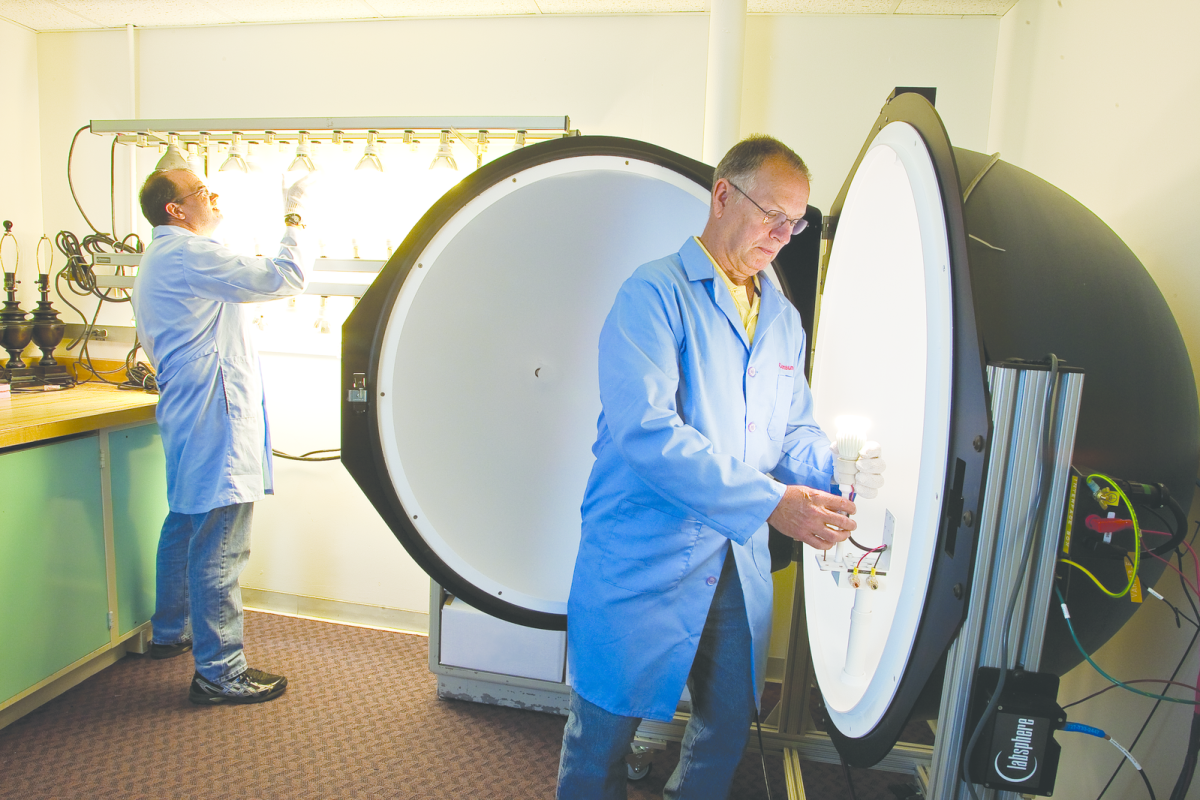
Most products cost more than they ever have before.
The higher the prices of the major products we rely on in our daily lives — things like cars, refrigerators, computers, and security systems — the more is at stake when it’s time to make a purchase. Make the right choice, and you’ll have a reliable machine that will last for years with minimal upkeep. Make the wrong choice, however, and you’ll be stuck with a substandard product that’s likely to cost you substantially in service and repairs throughout its useful life.
But with more brands, models, features, and variations than ever, how are consumers supposed to make educated purchasing decisions on big-ticket items like cars and appliances? When it comes to product research, the media landscape has become rife with influencer marketing, sponsored posts, paid reviews, and affiliate links, blurring the line between trustworthy, experience-based information and deceptive guerrilla marketing intended to influence and even deceive.
Could a nearly century-old organization called Consumer Reports provide the solution? “Ad-free. Influence-free. Powered by consumers.” That’s what the banner on the top of its website says.
Here’s everything you need to know about the nonprofit product testing and fact-finding firm — how it works, where it gets its data, and whether it can reliably help you make important decisions about where to spend your dollars.
Related: The least expensive car brands to repair & maintain according to Consumer Reports
What is Consumer Reports & what does it do?
Consumer Reports is a multifaceted nonprofit organization that aims to help educate consumers about products and help them make informed purchasing decisions. It does this by purchasing and testing products directly, administering detailed surveys to its members about the products they own and use, and investigating the veracity of claims made by manufacturers about their products.
Using the information it gathers via these means, Consumer Reports disseminates product reviews, reliability reports, product comparisons, and safety information both on its website and in its monthly magazine.
“We’re a nonprofit ready to stand up to those with something to sell but who refuse to tell … to those who readily compromise our health, wealth, and safety … our only agenda is getting to the truth … so together we can champion quality and fairness for all”
—Excerpts from “We Are Consumer Reports” video
Consumer Reports at a glance
- Founded: 1936 (as Consumers Union by fired employees of Consumers' Research after they attempted to unionize)
- Headquartered: Yonkers, NY
- Leadership: Marta Tellado (president and CEO)
- Employees: Approx. 500–600
- Members: At least 6 million
- Mission statement: “Consumer Reports is an independent, nonprofit member organization that works side by side with consumers for truth, transparency, and fairness in the marketplace.”
The following video, titled “We Are Consumer Reports,” provides an overview of the organization’s goals straight from the mouths of its employees:
Consumer Reports’ slogan, “Smarter choices for a better world,” attempts to sum up the organization’s purpose. CR aims to educate and inform the public by providing objective information about popular products so that consumers can make “smarter choices” when it comes to purchasing major items like electronics and vehicles — in some cases, items that can have important safety implications or environmental considerations, hence the “better world” part.
But just how well does CR abide by its mission? How long has it been testing products? How objective is it? Where does its money come from? Is it truly independent?
Let’s look at some specifics.

A short history of Consumer Reports
Consumer Reports has been around for nearly a century. The nonprofit was founded in 1936 by a group of workers who were fired from a product-testing firm called Consumers’ Research in response to their efforts to unionize in pursuit of fairer compensation. The former employees enlisted the help of scientists, investigative journalists, engineers, and other professionals to create a new, community-based product research and consumer advocacy organization.
The result was Consumer Reports (then known as Consumers Union), and after just four years, the nonprofit’s subscribership surpassed that of Consumers’ Research. Despite its popularity, however, CR faced harsh backlash from businesses and manufacturers weary of the firm’s investigative efforts.
Many labeled the nonprofit’s efforts to increase transparency about common consumer products “unpatriotic” and even “communist.” Major publications, including the New York Herald Tribune and the New York Times, bent to the will of Consumer Reports’ critics by refusing to let the nonprofit advertise.
Nevertheless, Consumer Reports continued to pursue its mission of product research and customer advocacy, and over the decades that followed, its rigorous testing led to a number of changes in various products it reviewed, particularly in vehicles. A variety of high-profile companies (including Bose and Suzuki) have attempted to sue CR for torts like libel and disparagement due to negative reviews of their products, but none of the 13 manufacturers that have done so have been successful.
Now, nearly 90 years since its inception, Consumer Reports remains one of the most trusted names in product reviews, with over 500 employees and more than 6 million subscribers.

Consumer Reports, CC-BY-SA-4.0 via Wikimedia Commons
Does Consumer Reports actually test products?
Consumer Reports really does test products, and it doesn’t do so at the behest of the products’ manufacturers. In fact, CR specifically selects which products to test and then uses secret shoppers to purchase them at full retail price — just like a consumer would — rather than working with brands or manufacturers directly.
This is important because, in many cases, product reviewers are either paid for their review by the product’s maker, given the product for free, or provided with a higher-quality version of the product hand-selected by its manufacturer. All of these situations can compromise a review’s objectivity, whether consciously or otherwise.
How does CR decide which products to buy and test?
Consumer Reports avoids these pitfalls by not taking money, products, or even review requests from brands. Instead, it chooses to purchase and test products consumers may be likely to consider based on things like member surveys and Google search data.
According to its website, CR “conducts considerable research … gathering data about … consumer demand in the marketplace, and what our members care about most” before purchasing products and adding them to its testing schedule. According to CBS, CR’s annual testing budget exceeds $30 million.

Consumer Reports, CC-BY-SA-4.0 via Wikimedia Commons
How and where does CR conduct product testing?
Consumer Reports owns a large testing complex in Westchester County, New York. According to the CR’s website, the facility is the largest of its kind in the world, featuring 63 individual labs for product testing.
Many of the devices used by CR to test products were invented by the nonprofit for specifically that purpose. Within the nonprofit’s massive campus of laboratories, staff operate everything from helmet-dropping devices to sock-wearing machines.
The org also owns a 327-acre test course for cars and SUVs in rural Connecticut, as vehicles are one of the main types of products the company tests and reviews. The closed course includes over six miles of road on which vehicles are driven by professional car testers under a variety of conditions.
These labs and testing facilities are staffed and operated by a team of over 130 professionals, including engineers, researchers, and other scientists, as well as professional drivers and product testers.
How does Consumer Reports get its survey data?
In addition to testing products directly, Consumer Reports regularly surveys its members about the products they own and use. “Survey questions typically include how long the respondent has owned a particular product, how often they use it, whether it has broken or stopped working as well as it should, what types of problems the product has had, and whether they would recommend the product to someone else,” according to CR’s website.
Since members are surveyed repeatedly over time, CR is able to track how its members’ products perform as they age, allowing it to deliver insights about how long certain products tend to last, when they tend to develop problems, what these problems are, and how difficult and costly they are to fix.
This sort of information is particularly important for expensive products that consumers plan to use for years, like cars and appliances. Insights and information garnered from these surveys are combined with actual testing results from CR’s New York and Connecticut research facilities to provide as holistic and objective an understanding as possible of each product the organization reviews.
More consumer finance:
- The best used cars under $20k according to Consumer Reports
- The 10 least dependable cars according to Consumer Reports
- The longest-lasting car models (200k+ miles) according to Consumer Reports
How does Consumer Reports make money? Is it truly independent?
Since its inception, Consumer Reports has claimed to be independent, but this does not necessarily mean it is unbiased. That being said, bias isn’t necessarily a bad thing, so long as it doesn’t result in misinformation or biased product reviews.
Since its inception, CR has always been inherently biased toward the consumer, which for those seeking accurate information about product safety and quality (and increased scrutiny and regulation for corporations), is a good thing.
According to Consumer Reports’ website, its journalism aims to “influence businesses to improve the products and services they deliver, and strengthen norms, laws, and regulations through science, evidence, and data.” The fact that the organization has been sued by 13 different brands over the course of its existence and has never been found liable for publishing misinformation bodes well for its reputation among consumers.
All of this being said, Consumer Reports isn’t totally independent — although it does not publish outside advertisements from brands or retailers on its website or in its magazine, it does have a number of corporate partners, and its operations aren’t funded entirely by its members. Here’s what you should know.
Affiliate links
While CR does not partner with the retailers or manufacturers of any of the products it tests or reviews, it does include affiliate links in its articles. Customers interested in purchasing the products mentioned or reviewed in CR’s coverage can click these links and be forwarded to product sales pages on third-party marketplaces like Amazon.
CR earns commission fees from these marketplaces when customers purchase products through the links in its articles. Within any given product type or category, CR earns affiliate commissions regardless of which brand or model a customer chooses to purchase, so the fact that it includes affiliate links for each of the products mentioned in its articles doesn’t detract from its objectivity when it comes to brand-to-brand comparisons and reviews.
Consumer Reports’ auto content also includes affiliate links, primarily to TrueCar and Used Car Marketplace. According to CR’s website, “Consumer Reports collects a fee from TrueCar for vehicles purchased by its members from a TrueCar dealer. One hundred percent of the fees collected go to support the organization’s nonprofit mission. Consumer Reports has no financial relationship with any dealer.”
In this case, CR takes money from private companies, but these companies are simply marketplaces or listing boards that feature cars from a number of dealers and manufacturers, so the partnerships don’t incentivize CR to alter which makes or models it recommends.
Grants
In a number of cases, Consumer Reports has received large grants from other organizations to be used for specific purposes. In 2012, for instance, the Pew Charitable Trust (another nonprofit) provided the organization with $2 million to examine meat, poultry, and other food for carcinogens, heavy metals, and pathogens.
In 2021, CR received a grant of $375,000 from the Climate Imperative Foundation, an environmental advocacy nonprofit, to study the effects of gas stoves on indoor air quality. After completing the study, Consumer Reports (which continues to test and review gas ranges), released an article titled “Is Your Gas Range a Health Risk?” An excerpt from the article read “Our tests found NO₂ at levels above those recommended by some public health organizations for indoors, particularly when the ranges were used without ventilation and when a burner was set on high.”
While the organizations that funded CR’s research in these cases may have had political, environmental, or social objectives they hoped to further by pushing for specific research, these aims don’t necessarily undermine CR’s objectivity, at least not in a brand-to-brand comparison sense, which is what most of the organization’s readers care about most.
The takeaway
Most people look to Consumer Reports for its product reviews, comparisons, and rankings, and for this purpose, CR does seem to be the best in the business.
The organization rigorously tests products from many brands across each category and meticulously compiles survey data about the products its subscribers own. It doesn’t accept money or products from any of the brands whose products it reviews, but it does earn commissions from some marketplaces where these products can be purchased and accept grants from other nonprofits to fund specific types of research.
Overall, CR is mostly independent, and its aims are similar to those of the average consumer — to increase transparency, prioritize consumer safety, and hold manufacturers to a high standard so that products improve over time.
Related: Veteran fund manager picks favorite stocks for 2024







